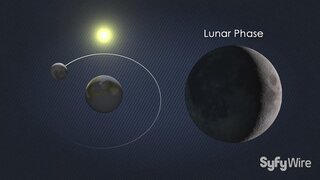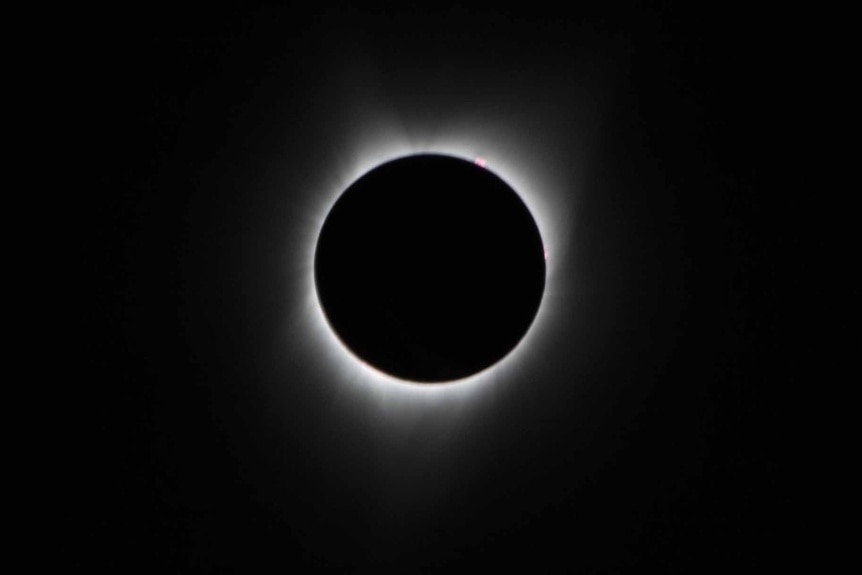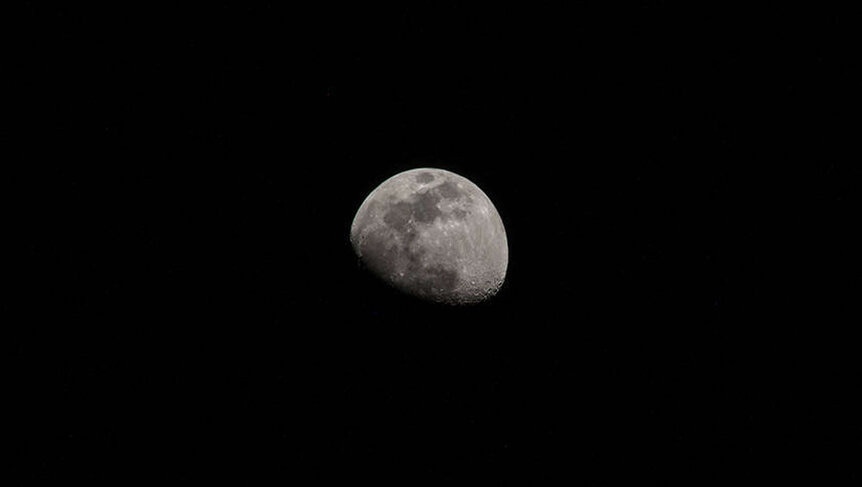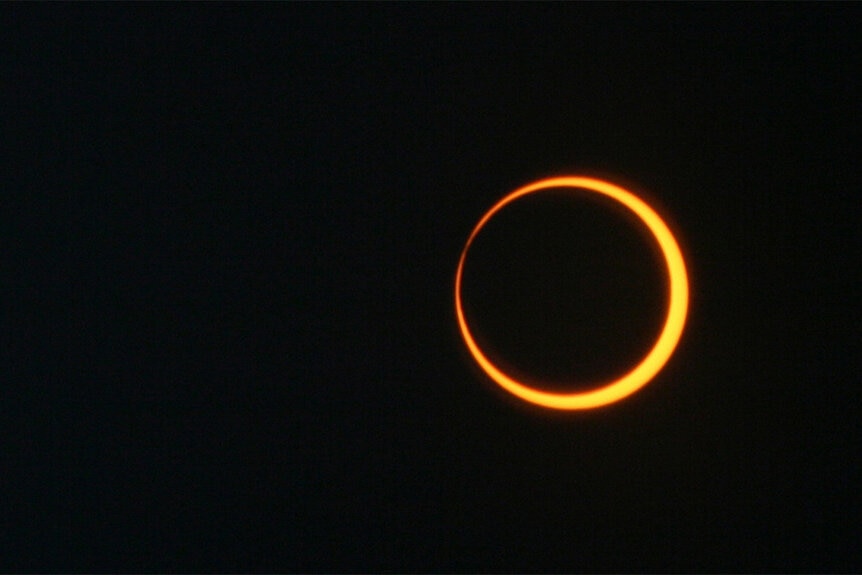Create a free profile to get unlimited access to exclusive videos, sweepstakes, and more!
Enjoy Those Total Solar Eclipses While You Can, Because Someday They'll End Forever
Pretty soon, cosmically speaking, there won’t be any total solar eclipses left.
David Twohy’s 2000 science fiction survival flick Pitch Black introduced the world to Richard B. Riddick (Vin Diesel), a humanoid alien with the uncanny ability to see in the dark and kick alien butt. He’s being transported in shackles for a lifetime of crime when the transport ship goes down over a barren planet.
What remains of a scientific installation has long been vacant and the scorched terrain harbors nothing but bones, gigantic and bleached. A trio of stars keeps the planet forever lit up, except for when nearby planets create a rare triple eclipse, plunging the planet into temporary darkness. Only then do the deadly subterranean Bioraptors emerge from their underground dens to hunt and consume anything that breathes.
Here on Earth, total solar eclipses are frustratingly rare, even with only one star to occlude, and they are getting rarer. Pretty soon, cosmically speaking, there won’t be any total solar eclipses left.
For More on Eclipses:
Bill Nye Talks Solar Eclipses and Meeting World-Ending Threats with Hope
Named for a Serpent Deity, NASA's Apep Mission Is Set to Fire Rockets at the Eclipse
Conspiracies Orbit April 8 Total Solar Eclipse; Why You Shouldn't Worry
Why Do Eclipses Happen at All?
A total solar eclipse is one of the most incredible natural events you can witness on Earth, and it might be one of the most incredible natural events on offer anywhere in the galaxy. A few times a year, between two and five on average, the Sun and the Moon line up perfectly from our point of view, blotting out the Sun for a few minutes. It’s a bit of cosmic happenstance with a breathtaking result.
“We have this spectacular effect here on Earth which is certainly unique in the solar system and may be unique in the 200,000 stars we look at, where the Moon from Earth blocks out the Sun almost exactly.” Bill Nye, famed Science Guy and President of the Planetary Society, told SYFY WIRE in advance of the April 8 eclipse.
The Sun is about 400 times larger than the Moon, but it’s also about 400 times farther away. Through the magic of perspective, the two objects appear nearly the same size in the sky from our unique position. Their apparent sizes are such that the Moon is large enough to cover the main disk of the Sun but not so large that it blocks out the Sun’s hazy coronal fringes. That nearly perfect cosmic placement is the result of our privileged position not just in space, but also in time. We just happen to live inside a happy window when the apparent sizes of the Sun and Moon match up.
The Moon Is Getting Farther Away, Shrinking in the Sky
The author Douglas Adams wrote in Life, the Universe and Everything that the trick to flying is to throw yourself at the ground and miss. That’s more or less how orbits work.
Imagine throwing a rock as far as you can, straight out in front of you. You’d watch as it raced forward and down toward the ground at the same time. If you threw a rock and dropped a rock at the same time, you’d see that they fall toward the ground at the same rate, regardless of forward motion. Where the thrown rock ends up is a measure of how much horizontal distance you were able to achieve before gravity won out.
Now, imagine that you were super strong, and you could throw a rock twice as far with every throw. Eventually, you would throw a rock so far that by the time gravity pulls it down, the surface of the Earth will have curved away and your rock will miss the ground. When your horizontal motion is fast enough that the ground can’t catch up to you, you’ve achieved escape velocity and entered orbit.
We often think of orbits as a function of altitude, but they are really a function of velocity and they are always changing, a little bit at a time. Recently, a piece of space trash (possibly a discarded battery from the International Space Station) crashed through the roof of a Florida home. The battery was jettisoned in 2021, part of a collection of dead batteries on a JAXA (Japanese Aerospace Exploration Agency) pallet, and it spent three years in a slowly degrading orbit.
As the pallet whipped around the planet, it dragged through the thin upper atmosphere. There isn’t much up that high in the way of air, but there’s enough to produce just a tiny bit of drag, slowing the pallet down. The slower it got, the more the ground caught up to it and the thicker the air became. That cycle continued until it (mostly) burned up in the atmosphere over Florida.
Active spacecraft regularly boost their orbits to keep them from decaying, but without that help all orbits eventually come loose. The Moon and the Earth have a similar relationship to the Earth and that pallet, except it’s running in reverse. As the Moon orbits our planet, it borrows a little bit of rotational energy from the Earth. That energy boosts the Moon into a slightly higher orbit and slows the rotation of the Earth. Every year, the Moon gets about an inch farther apart and the day gets about 0.000018 seconds longer.
The First and Last Total Solar Eclipses
Whether the Moon can eclipse the Sun is a little more complicated than just their average distances; there’s also the problem of elliptical orbits. The Moon doesn’t orbit the Earth in a perfect circle. Instead, it sways a little as it goes around, drifting a little farther away or a little closer throughout the month.
At its closest point (perigee), the Moon is about 226,000 miles away. At its farthest point (apogee), it’s roughly 251,000 miles away, and that’s enough of a difference that it’s noticeably smaller in the sky. Even today, if an eclipse happens while the Moon is at apogee, it appears too small to fully cover the Sun and we get an annular eclipse. Still, we can calculate the Moon’s distance and apparent size in the sky over time to figure out when the first eclipse could have happened and when the last one will be possible.
The oldest recorded eclipse might date back to November 30, 3340 BC. Anthropologists have found spiral symbols and circular petroglyphs in Ireland, dating to that time, which might document a total solar eclipse. Their meaning is still the subject of debate. That wouldn’t be the first eclipse, it might just be the first time humans got wise to them and left a record of the event. In fact, there wasn’t really a time before eclipses. The farther we go into the past, the closer the Moon is and the larger it is in the sky. Eclipses have been possible since the formation of the Moon, but they didn’t get glorious until the Moon got far enough away to reveal the Sun’s corona.
The last eclipse will happen when the Moon at perigee is just large enough to still cover the disk of the Sun. After that, the Moon will never again get close enough to the Earth to totally cover the Sun. Crunching the numbers, astronomers have landed on a tentative date about 600 million years from now. That’s if the Moon behaves and keeps receding at a steady rate, and that probably won’t happen. As the planet evolves, as the continents move and the oceans reorganize, freeze, or evaporate, the tidal interactions between the Earth and the Moon will change and the recession will likely slow. That could mean that eclipses last a while longer. Some researchers estimate eclipses could continue on Earth for another 3 billion years.
As far as we’re concerned, it might as well be forever. Humans will likely have vanished from the Earth, through evolution, extinction, migration, or some combination of them, long before the last total solar eclipse shrouds the daytime sky in shadow. We’re lucky to live at a time and in a place where they are so spectacular. And where they don’t bring out flesh eating monsters.
Get Pitch Black and the rest of the Chronicles of Riddick, available from Universal Pictures.

































